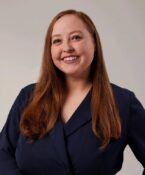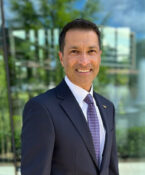A teenager again

The 7th grade got off to a promising start for Seth Rodgers. He was in advanced classes and played the percussion drums so well that he was invited to perform with the high school band.
Then the headaches started.
A mysterious pressure he had felt in his forehead that summer evolved into excruciating pain. He missed 36 days of school. By 8th grade, the lights and noises he encountered in the hallways were so discordant he had to be home schooled.
“When the headache was really bad, I’d turn off the lights, black out my windows and lie in bed until it got a little better,” Seth said. “Sometimes that was hours.”
To his parents, Cecily and Steve, it was like seeing their son’s childhood stolen. They searched endlessly for solutions, visiting multiple specialists and trying every treatment. Seth underwent three spinal taps, two hospitalizations, nerve blocks, acupuncture and Botox treatment. He was prescribed enough medications to cover a table top.
Nothing worked – until they visited Dr. Darrin D’Agostino, DO, at UNT Health Science Center.
Known for his ability to treat patients holistically, Dr. D’Agostino, approached Seth’s health issue with an open mind. The teenager suffered from increased intracranial pressure, which a previous doctor believed was caused by intracranial hypertension. But that condition is rare in children, and Dr. D’Agostino knew there were other potential causes.
He also realized that the many medications Seth was taking could dehydrate him and make him sicker, so Dr. D’Agostino drastically altered his medication regiment.
“Dr. D’Agostino was a breath of fresh air,” Cecily said. “Very soon, I could see in Seth’s face that his head didn’t hurt as badly as it had hurt him for over two years. It was a huge change.”
Today, Seth is 15 and back in school for the 9th grade. He’s active again, walking his dog, skateboarding and even practicing the drums for a return to the school band.
Dr. D’Agostino monitors Seth’s intracranial pressure and adjusts his medications when necessary. Seth may outgrow the condition, he said. He credits Seth’s improvement to UNT Health’s strategy of treating all patients in a comprehensive, well-coordinated manner.
“What is rewarding to us is that Seth’s life is getting back to normal,” Dr. D’Agostino said. “He’s a teenager, and now he gets to act like a teenager again.”





Social media